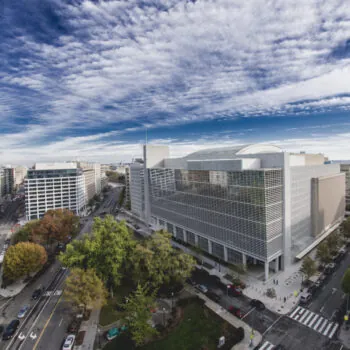The statements and actions of most of the world’s governments during the 2025 IMF/World Bank Annual Meetings indicate that they are still fully committed to multilateral collaboration on climate and financial reform. The Coalition of Finance Ministers published a Climate Action Statement that included more than 500 policies across 70 countries. Meanwhile the Brazilian Finance Ministry secured broad international support for the final report of the COP30 Circle of Finance Ministers, which creates a blueprint for future finance ministry engagement on climate issues.
The institutions convening the meetings in Washington DC – the IMF and World Bank – were notably quiet about climate within the official event program. But, in side discussions most board members expressed their strong commitment to the important role that the institutions will play in financing climate action.
- For the IMF, responding to mainstream board preferences will mean performing its core function by fully recognising and integrating the macro-economic criticality of climate change into its operations including through key reviews due next year.
- For the World Bank, doing so will mean enhancing the Group’s climate strategy by more clearly responding to the plans and priorities of developing countries, doubling down on adaptation and resilience, incentivising global public goods, and positioning the Bank at the heart of an interconnected global system of public banks.
A difficult backdrop for development finance saw adjustments to both the tone and focus of discussions on international financial architecture reform that have driven attention at recent meetings. This saw an increase in attention on job creation, the need to maintain robust climate policies and the options for continuing to increase the scale of development finance in difficult fiscal circumstances.
One important theme was how to build smarter prudential regulation while also developing public finance instruments that can better absorb risk, and pool in private investment. The topic was highlighted by the Circle of Finance Ministers and is also under consideration by the incoming French G7 Presidency and the UK’s EMDE Mobilisation Taskforce. Focus also fell on how the world’s largest credit rating agencies would respond to newly published data on financial performance in developing countries, with at least one of the major agencies suggesting that this could enable hundreds of billions of dollars of additional headroom for climate and development lending in coming years.
The path through 2026 holds several pressing challenges. Failure by G20 Finance Ministers to reach consensus last week (other than on debt reform) foreshadows the likely temporary loss of the G20 as a forum for most climate-related financial reform discussions during 2026. Governments will need to work together to find new routes for advancing the work of the Circle of Finance Ministers, as well as to continue efforts by the finance ministries and central banks that have been managed through the G20 Sustainable Finance and International Financial Architecture Working Groups.
COP30 will be a key moment to further build out international consensus on financial reform for climate mitigation and adaptation, and by doing so to strengthen the overall multilateral approach to climate change. To bridge from Annuals to COP, all eyes will be on the Baku to Belém Roadmap to be presented by the Brazilian Presidency.
A strong finance outcome at COP30 will require:
- The Baku to Belém Roadmap to take forward the key elements and vision of the Circle of Finance Ministers’ report, while also responding to inputs made over the course of the year by UNFCCC Parties;
- Developed economies to provide more confidence in future public climate finance, in particular for adaptation finance, and also to signal a broader structural vision for mobilising finance at greater scale which will include working through the IMF and World Bank as well as other institutions.
- The recent political momentum around country platforms and innovative instruments to be seen to lead towards a real step change in delivery, centred on ambitious national plans, a rationalised and more effective delivery structure and the scaling of support mechanisms including innovative green guarantees and insurance.
- Governments supporting continued climate ambition in international institutions, spanning the Global North and South, to continue to collaborate, and jointly signpost a plausible pathway to deliver reforms through a variety of forums in which finance and other ministries, central banks and regulators, and other relevant actors, can come together in different ways to make progress. This is likely to involve working through multiple international coalitions and forums in 2026 including the French G7 Presidency and the International Development Finance Club.
- The vast majority of countries stepped up in Washington DC to show their support for climate-related financial reform. As we approach Belém, they must now work together to show how they will deliver.


